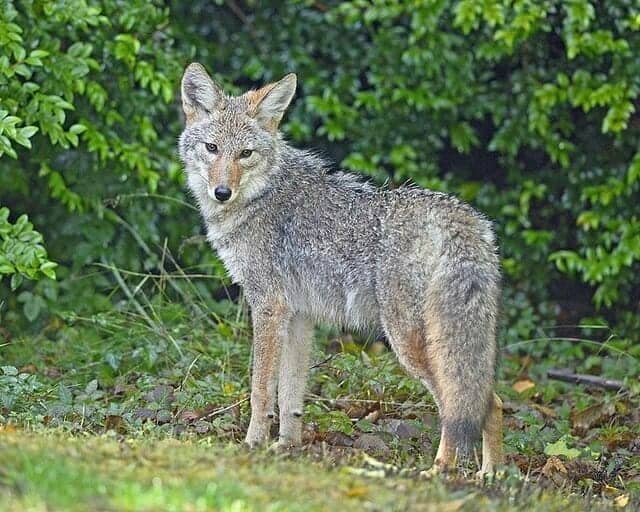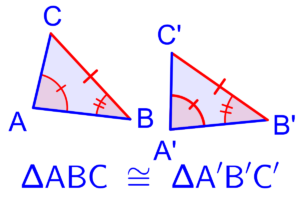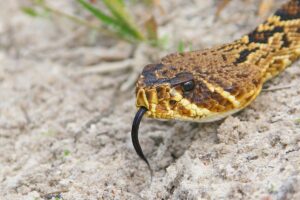
Coyotes have long captured the imagination of humans with their elusive nature and enigmatic presence in the wild. Encounters with these intelligent canines often evoke a sense of wonder and curiosity, prompting questions about their significance in folklore and symbolism. In this article, we explore the meaning behind encounters with coyotes and delve into the cultural interpretations and practical implications of such encounters.
I. Introduction
Coyotes, with their cunning and adaptable nature, have fascinated humans for centuries. From ancient mythology to modern-day folklore, these elusive creatures have held a prominent place in the collective imagination. Encounters with coyotes often spark intrigue and contemplation, leading individuals to ponder the deeper symbolism and significance of such encounters.
II. Coyote Symbolism in Different Cultures
Native American Beliefs
- Spiritual Significance: In Native American cultures, coyotes are revered as powerful spiritual beings symbolizing adaptability, cunning, and survival skills.
- Role in Creation Myths: Coyotes feature prominently in creation stories and oral traditions, often depicted as tricksters or shape-shifters with the ability to navigate between the physical and spiritual realms.
Western Folklore
- Trickster Archetype: In Western folklore, coyotes are often portrayed as tricksters and mischief-makers, challenging societal norms and defying expectations.
- Tales and Legends: From Native American folklore to contemporary literature, coyotes inspire a rich tapestry of tales and legends that explore themes of transformation, resilience, and the unpredictable nature of life.
Modern Interpretations
- Literary References: Coyotes continue to be a source of inspiration for writers, poets, and artists, serving as symbols of freedom, rebellion, and the untamed wilderness.
- Cultural Representations: In popular culture, coyotes are depicted in various forms, from children’s books to movies and television shows, reflecting society’s fascination with these elusive creatures and their enduring mystique.
III. Interpretations of Coyote Encounters
Positive Interpretations
- Adaptability and Resourcefulness: Encounters with coyotes may symbolize adaptability and resourcefulness, encouraging individuals to embrace change and overcome challenges.
- Guidance and Protection: Some view coyote encounters as a sign of guidance and protection, suggesting that these cunning creatures may serve as guardians or messengers in times of need.
Negative Interpretations
- Warnings and Cautionary Tales: In certain cultures, encountering a coyote may be seen as a warning or omen of impending danger or misfortune, urging individuals to proceed with caution.
- Omens of Misfortune: Superstitious beliefs associate coyote sightings with bad luck or negative omens, prompting individuals to avoid certain actions or decisions.
Neutral Interpretations
- Natural Behavior: Coyote encounters may simply reflect the natural behavior of these wild animals, reminding individuals of the interconnectedness of all living beings in the ecosystem.
- Observations of Wildlife: For wildlife enthusiasts and nature lovers, encountering a coyote offers a rare opportunity to observe these elusive creatures in their natural habitat, fostering a deeper appreciation for the wonders of the natural world.
IV. Practical Implications of Coyote Encounters
Urban Wildlife Management
- Coexistence Strategies: In urban areas, coyote encounters raise important considerations for wildlife management, prompting efforts to promote coexistence through habitat preservation and public education.
- Education and Outreach Programs: Community outreach initiatives aim to raise awareness about coyote behavior and provide guidance on how to safely interact with wildlife in urban environments.
Personal Safety Considerations
- Understanding Coyote Behavior: Understanding coyote behavior and ecology is essential for minimizing conflicts and ensuring personal safety in areas where humans and coyotes coexist.
- Mitigating Conflicts: Implementing strategies such as secure garbage disposal, pet supervision, and hazing techniques can help reduce the risk of negative interactions between humans and coyotes.
Environmental Awareness
- Ecological Role of Coyotes: Recognizing the ecological role of coyotes as apex predators highlights the importance of preserving natural habitats and maintaining balanced ecosystems.
- Conservation Efforts: Conservation initiatives focus on protecting coyote populations and their habitats to ensure the long-term viability of these iconic species and the ecosystems they inhabit.
V. Conclusion
Encounters with coyotes offer a glimpse into the complex relationship between humans and wildlife, inviting contemplation of the deeper meaning and symbolism found in nature. Whether viewed as symbols of adaptability and resilience or as harbingers of caution and mystery, coyotes inspire awe and reverence, reminding us of the inherent beauty and unpredictability of the natural world. By respecting wildlife encounters and embracing the mysteries of nature, we can cultivate a deeper connection to the world around us and find meaning in the fleeting moments shared with creatures such as the coyote.




